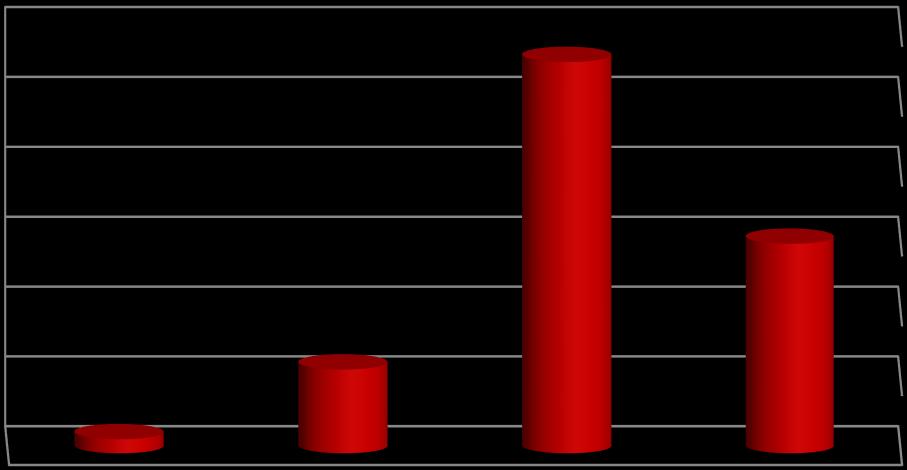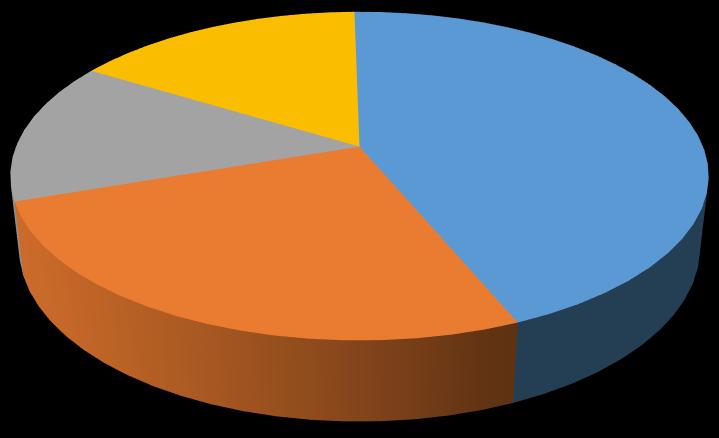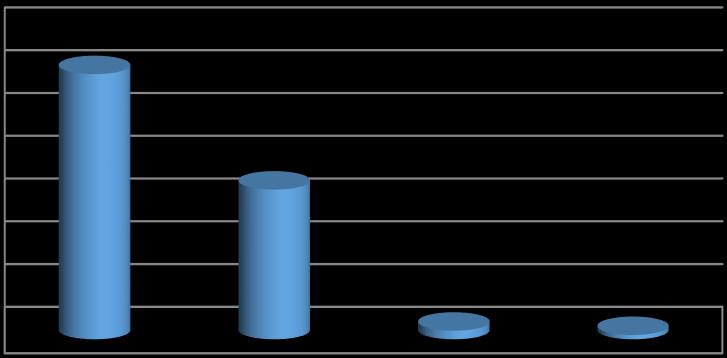Ganafa www.iaajournals.org
IAA Journal of Applied Sciences 9(1):17-26, 2023.
©IAAJOURNALS
ISSN: 2636-7246
Knowledge, Attitude and Practices regarding Exclusive Breastfeeding Among Mothers Attending Maternal Child Health Clinic at Kitagata Hospital, Sheema District, Uganda
Ganafa ArthurDepartment of Nursing Science, Kampala International University, Uganda
ABSTRACT
Exclusive breastfeeding entails feedingof infants or young children with breast milk only uptotheageof6months.Somemothersexpressmilktobeusedwhiletheirchildisbeing cared for by others by hand or by using a breast pump. Globally, inadequate nutrition is an underlying cause of the deaths of more than 2.6 million children and over 100,000 mothers every year. Exclusive breast-feeding entails feeding an infant for 6 months and thereafter should receive complementary foods with continued breastfeeding up to 2 years of age or beyond. This research study was about the knowledge, attitude and practices regarding exclusively breast feeding in Kitagata Hospital A cross-sectional descriptiveutilizingquantitativemethodsofdatacollection. Thesamplesizeofthestudy population was 100 mothers. The mother’s ages ranged from I5 to 44 years, majority (25%) age 20- 24 years, (71%) of the respondents heard about exclusive breastfeeding, affordability and attachment to the child was reported equally by (30%) of the respondents, (56%) did not agree that EBF is on way of family planning, those who agreed included (12%) and the rest of the respondents did not know (32%). Sixty-two (62%) stated that their culture allowed breastfeeding immediately after delivery, (38%) of the mothers believed, breastfeeding makes them lose the shape of their breasts, this was followed by (24%) who believed breastfeeding in public was their main problem. Most mothers breast fed exclusively only up to 2 months, majority of the mothers breastfed based on the demandofthechild(42%).Seventy-eight(78%)oftherespondentsbreastfedtheirchildren when sick, while only 22% did not do so. Most mothers are married, reached secondary level of education, work mostly as housewife’s, know about EBF, Breast feeding is affordable and created attachment to the child. Mothers perceive babies needing more thanmilkfearedlosingtheshapeoftheirbreasts,breastfeedingbeingoldfashion,culture allowed breastfeeding immediately after delivery, most mothers’ breast feed exclusively only up to 2 months. Public forums should be used as a channel to promote EBF, early introduction of complementary foods to infants by mothers should be discouraged, research on the adequacy of breast milk in meeting the nutritional needs of infants to 6 months.
Keywords: knowledge, attitude, practices, exclusive breastfeeding, mothers
INTRODUCTION
Breastfeeding entails feeding of infants or young children with breast milk from female breasts. The sucking reflexenablesbabiestosuckandswallow milk instinctively. Some mothers express milk to be used while their child is being cared for by others by hand or by using
a breast pump. Globally, inadequate nutrition is an underlying cause of the deaths of more than 2.6 million children and over 100,000 mothers every year many health groups, such as World Health Organization (WHO) and UNICEF support 6 months of
Ganafa www.iaajournals.org
exclusive breastfeeding and continued partial breastfeeding for extended periods [1]
World Health Organization (WHO) recommends breastfeeding as a main source of food for babies for the first six months, and encourages mothers to consider breastfeeding as the only feeding source [2]. Breast milk is the safest and most natural food for an infant. It provides an infant’s complete nutritionalneedsuptofourtosixmonths ofage.Thereis noneed forotherfoodor drink before this age. When the baby is fed on breast milk only, it is called exclusive breastfeeding. Exclusive
Study design and rationale
breastfeeding provides the best nutrition and growth for infants, and continued growth with the introduction of solid foods at six months [3].
Africa exclusive breastfeeding practices isbasedoninitialhospitalmaternitystaff trained to support new mothers when they indicate a willingness to try breastfeeding [4].
Western Uganda however, important changesintheextensionofthematernity leave of 120 days in various sectors are associated with 97% of working women exclusively breast feeding for a median duration of 150 days.
METHODOLOGY
The design was cross-sectional descriptive and utilizing quantitative methods of data collection. This study involveddescribingthecharacteristicsof a particular situation, event or case in relation to variables such as person, place, and time.
Study setting
The study was conducted in Kitagata Hospital, chosen because of being in the rural area and serving mainly highly populated areas with high reproductive rate according to the health facility demographic profile (2014).
Study population
The study population was mothers of reproductive age (15-49 years) who attends Kitagata hospital maternal and child health (MCH) clinic.
Sample size determination
Using [5], the sample size for the general population was 100 respondents, with a fixed error of 5% and a Confidence Interval at 95%.
Sample size calculation
Equation 1: Sloven Formula
Where n= sample size
e= fixed error
N= target Population of the total population
N= 150, e= 0.05 n= 150 1+150(0.052) Therefore: n= 100 respondents
Sampling procedure
Simple Random Sampling was employed to select the respondents at postnatal clinic. This is done by writing yes or no on pieces of paper in a box and ask the respondents to pick. Those who picked yes were enrolled in the study. This was done until the required number of respondents was achieved.
Inclusion criteria
Allmothersofreproductiveagewhowere present at post natal clinic on the day of data collection who have consented to participate in the study were included.
Exclusion criteria
Research instruments
The researcher administered questionnairecontainingbothclosedand open-endedquestionswasusedtocollect data. This is because it makes data collectioneasyandfast.Italsosimplifies data analysis.
Data collection procedure
Data was collected using a semi structured questionnaire. Interviews were administered directly to each respondents following the questionnaire printed in English and translated in the
Ganafa
Runyankole language (language most understandable).
Data processing and analysis
Qualitativedatafromin-depthinterviews wastranscribedandanalyzed duringand after the fieldwork. The analysis was based on themes and subthemes of the study. Code categories were identified andthenformedthebasisofconclusions about the study. Direct quotes from the respondentswerealso used.Quantitative data from exit interviews was edited before leaving each respondent for uniformity and accuracy. The data was then coded, entered and analyzed in the computer using the Statistical Package of social sciences (SPSS). And findings were presented and described by tables, graphs, and charts.
Ethical considerations
Before embarking on the data collection process, the researcher obtained an
www.iaajournals.org
introductory letter from Kampala international university after the approval of the Proposal. This letter was then presented to the medical superintendent Kitagata Hospital, who introduced the researcher to the relevant health workers/staff. After getting the clearance from the Health center, the researcher obtained informed consent fromtherespondentsandinformedthem about the purpose of the study.
RESULTS
In total 100 respondents took part in the researchstudy,majorityage 20-24 years
as shown in figure 1 below. None of the mothers was aged 45-49 years.
25%
20%
15%
10%
30% 15-19 20-24 25-29 30-34 35-39 40-44
5%
Figure 1: Age distribution of the respondents
34, 35-39, 20-24, 15-19 and 40-44 responding. 25% 15% 22% 17% 6% 0%
Figure 2: Marital status of the respondents
Majorityofthe participants were married (69%), none of the participants had widowed. Those who were single
constituted(24%)whilethedivorcedwere the least constituting only (7%).
Figure 3: Level of education
Most respondents attended secondary level of education (56%), Tertiary level of education also indicated a significant
percentage of the respondents (30%). Those who did not go to school constituted (2%).

Table 1: Occupational distribution
Category Number Percent
House wife 44 44%
Civil servant 23 23% Self employed 22 22%
Others 11 11%
Total 100 100%
Majority of the women worked as housewife’s (44%). Those who worked at thecivilservantoffices(teachers,district
councils, police, and others) constituted (23%).
Catholic Protestant Muslim Other
Figure 4: Religious distribution of the respondents


Catholic denomination took the majority (44%) followed by the protestants (26%). The Muslims women participated in the study with a representation of (14%).
Others constituted (16%) which included; seventh day Adventists (SDAs), Pentecostals.
Figure 5: Those who heard about EBF
Ganafa
The findings indicated that (71%) of the respondents heard about exclusive breastfeeding and all them said it involvedgivingthechildonlybreastmilk
www.iaajournals.org
for six (6) months. Twenty-nine (29%) of the respondents said they did not hear about exclusive breast feeding.
Figure 6: Benefits of EBF
All respondents admitted that; exclusive breast feeding was good. Majority of these attributed it to mainly two factors.
Affordability and attachment to the child was reported equally by (30%) of the respondents.
Figure 7: EBF and Family planning
More than a half of the respondents did not agree that EBF is on way of family planning(56%).Those whoagedincluded
(12%) and the rest of the respondents did not know (32%).
Figure 8: Respondent’s culture about the onset breastfeeding
Figureviiishowthatmostofthemothers in this study (62%) stated that their culture allowed breastfeeding immediately after delivery. One (1%) of
the respondents stated that their culture allowed exclusive breast feeding after a day. They did not want the child to feed on the first milk.
Figure 9: Respondents thoughts about Breast feeding


Figure ix shows that (38%)of the mothers believed, breastfeeding, makes themlose the shape of their breasts. This was followed by (24%) who believed
breastfeeding in public was their main problem. Those who said breast feeding was an old fashion constituted only (2%).
Table 2: Period of EBF
Category Number Percent
Up to 2 months 55 55% 2-3 months 25 25% 4-5 months 15 15%
Up to 6 months 5 5%
Today 100 100%
Most mothers breast fed exclusively only up to 2 months. Other mothers introduced other feeds after two (2)
months. Those who exclusively up to for months included only (5%)
Table 3: number of times of daily breastfeeding
Table2showsthatatleastallthemothers breastfeedtheirchildren.Majorityofthe mothers breastfed based on the demand
of the child (42%). This was followed by those who breast fed 1-6 times in a day.
78%
Figure 10: Breast feeding a child when sick
Seventy-eight (78%0 of the respondents breastfedtheirchildren whensick,while only 22% did not do so. Those who don’t
not breast breast feed a sick child did so because thethoughbreastmilk increases the vomiting in the sick child.
DISCUSSION
The findings indicated that (71%) of the respondents heard about exclusive breastfeeding and all them said it involvedgivingthechildonlybreastmilk for six (6) months. The study agrees with [6] demonstrated a vast knowledge about
breast feeding both to the infant and the mothers.
The study showed that the majority of the participants showed affordability as most important benefit of exclusive breastfeeding(30%).Respondentsdidnot
Ganafa www.iaajournals.org
know exclusive breastfeeding helps mothers lose weight [7], decreasing the riskoftype2 diabetes, breast cancer, [8] This study the mothers demonstrated more of social benefits as compared to the scientific benefits. However, this was attributed to by high illiteracy More than a half of the respondents did not agree that EBF is on way of family planning (56%). This is contrary to [9] improve exclusive breastfeeding rates it is important to involve healthcare providers in the process of encouraging mothers to choose exclusive breastfeeding for their children as it contributes to family planning practices. Psychological beliefs are important factors that influence exclusive breastfeeding prevalence in general [10] Thirty eight (38%) of the mothers believed, breastfeeding makes them lose the shape of their breasts although less represented, the findings of a study among Hong Kong women showed that women tended to consider breastfeeding as socially limiting and thought that womenshouldnotbetiedtothebabyand family making them age and lose the shape of their breasts. This was followed by (24%) who believed breastfeeding in
public was their main problem. Those who said breast feeding was an old fashion constituted only (2%). This study agreed with a number of studies including the UK national infant feeding survey found that 19 % of those who stopped breastfeeding by 4 months attributed this to the need to return to work. This research concurs with findings of other researchers who found out that maternal employment was a factor as in Hong Kong women’s decisions to wean early [11,12,13,14,15,16]. Table 2 shows that at least all the mothers breast feed their children. Majority of the mothers breastfed based on the demand of the child (42%). This was followed by those who breast fed 1-6 times in a day. Seventy-eight (78%) of the respondents breastfedtheirchildren whensick,while only 22% did not do so. Mothers believed that sometimes breast milk is the reason the child gets sick especially in early infants. These infections however begin to develop from six weeks when the children’s immune systems is beginning to establish with ability to recognize infection which is a complimentary of breast milk.
CONCLUSION
Mostmothersaremarried,(69%),reached secondary level of education (56%), work mostly as housewife’s (44%), catholic denomination took the majority (44%). Most mothers know about EBF (71%) and all them said it involved giving the child only breast milk for six (6) months. Exclusive breast feeding was good to the mothersattributedmainlytotwofactors; Affordability and attachment to the child
was reported equally by (30%) of the respondents.
Mothers don’t view breastfeeding as one way of family planning. Among the other factors that hindered EBF, mothers perception of babies needing more than milk had the highest percentage, followedbyfearofbreastsloosingshape. The least factors were having difficulties in EBF and breastfeeding being old fashion all at all.
REFERENCES
[1].SavetheChildren, Nutritionin the First 1,000 Days: State of the World's Mothers 2012, May 2012, isBN 1-888393-246, available at: https://www.refworld.org/docid/ 50f7f7a62.html [accessed 12 January 2023]
[2].World health organization WHO. (2013). Breastfeeding. Retrieved from World Health Organization WHO:http://www.who.int/topics/ breastfeeding/en/ [3].UNICEF. (2007). Child Poverty in Perspective: An Overview of Child Well-Being in Rich Countries.
Ganafa www.iaajournals.org
Innocenti Report Card 7, UNICEF Innocenti Research Centre, Florence, United Nations Children’s Fund.
[4].Sanford Health. (2014). Birthing Center/Special Care Nursery. Retrieved from Sanford Health: http://www.nchs.com/birthingce nterspecialcarenursery [5].Slovin, E. (1960). Slovin's formula for sampling technique. Retrieved on February, 13, 2013. [6].Stanley, L., Mei, C., Gowri, R., Priscilla, C., Maqula, N., Deirdre, D., Joseph, L. (2007). Breastfeeding and maternal and infant health outcomes in developed countries. Rockville: AHRQ Publication No. 07-E007. [7].The Office on Women's Health. (2012, April 5). Breastfeeding. Retrieved August 19, 2013, from Womenshealth.gov: http://www.womenshealth.gov/b reastfeeding/ [8].Rosenblatt, k. A., and Thomas, D. B.(2012).Lactationandtheriskof epithelial ovarian cancer. International Journal of Epidemiology, 22, 192-197. [9].World Health Organization and UNICEF. (2013). Protecting, promoting and supporting breastfeeding: The special role of maternity services. Switzerland: World Health Organization& UNICEF.
[10]. Chambers, J., McInnes, R. J., Hoddinott, P., and Alder, E. M. (2007). A systematic review of measures assessing mothers’ knowledge, attitudes, confidence and satisfaction towards breastfeeding. Breastfeeding Review Journal, 3, 17-25.
[11]. Chen, A., and Rogan, W. J. (2014). Breastfeeding and the risk of postneonatal death in the United States. Journal of the American Academy of Pediatrics, 113, 435439.
[12]. N Gloria, AO Yamile, E Agwu (2022).Predictors Patterns of Bacterial Urinary Tract Infections Among Febrile Children UnderFive Years of Age at Kampala International University Teaching Hospital. IAA Journal of Biological Sciences 9 (1), 39-60. [13]. N Gloria, AO Yamile and E. Agwu (2022). Susceptibility patterns of bacterial urinary tract infections among febrile children under-five years of age at Kampala International University Teaching Hospital. IAA Journal of Biological Sciences 9 (1), 61-79. [14]. OA Hussein, M Joy, JN Musiime (2022).The composite immediate adverse maternal outcomes among women in labor referred to Kampala International University Teaching Hospital.IAA Journal of Scientific Research 8 (1), 149-156 [15]. B Petrus, N Emmanuel, A Ezera (2022).Prevalence of Pelvic Inflammatory Disease among Women Attending the Gynecology Clinic at Kampala International University Teaching Hospital, Uganda IDOSR Journal of Science and Technology 8 (1), 38-46. [16]. B Petrus, E Nzabandora, E Agwu (2022).Factors associated with Pelvic Inflammatory Disease among Women Attending the Gynecology Clinic at Kampala International University Teaching Hospital, Uganda IDOSR Journal of Biochemistry, Biotechnology and Allied Fields 7 (1), 48-63
